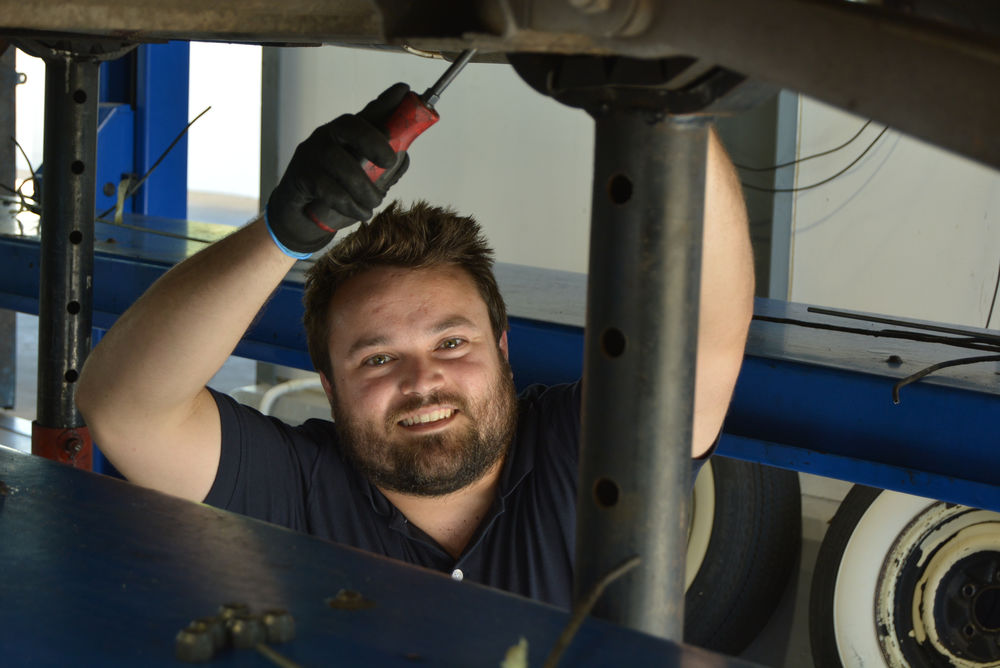
03 Nov Spanner Works: JP du Plessis
A new, regular feature outlining the activities of FMM’s workshop personnel who are responsible for repairing, renovating, refurbishing and restoring the museum’s large collection of vehicles. We start with JP du Plessis and a new box of tricks for a DeSoto Airflow…
Just after I started working at FMM in September 2019, it was decided that I take on the long-term project of converting the museum’s 1934 DeSoto gear train to that of a 1935 spare parts car that had recently been donated. Lorenzo and the team had taken a trip up to Fochville to collect the ’35, which was already disassembled, so the gearbox was just lifted on to the workbench to assess what to do to get it unstuck from rust, grime and years in the veld. Patience, carb cleaner, WD40 and a few shock treatments with a 2-pounder later, it eventually budged and I was able to turn the gears. The original gearbox had much smaller dimensions, no overdrive option and third gear had stripped a few teeth.
The entire assembly was stripped, overdrive included, to properly clean each individual part. The gearbox was reassembled and then mated with the rebuilt overdrive unit. Still working on the bench, I was able to turn the gears and select them fairly smoothly with the selector forks by using a big flat screwdriver.
So the planning started for fitment to the car and there were a few things to consider. The input shaft of the old gearbox was 1-inch diameter, whereas the replacement gearbox was 1⅛-inch. So the clutch spline was a concern, but it was found that it had much play on the 1-inch shaft and fitted the other shaft snugly. The replacement gear train was also substantially larger and longer than the original, so the gear train tunnel clearance had to be checked. Thankfully, the spare car came with other spare parts that were both salvageable and suited for use with the new dimensions. Fortunately, it was found that the spare car’s bell housing would work almost perfectly, along with the driveshaft. Both items required refurbishment.
Removing the bell housing from the spare engine was a tedious task due to all the years it had spent outside. It was sand-blasted then adapted to the car’s clutch release bearing assembly, after which it was repainted by Elton. The driveshaft universal joint trunnions were rusted solid at the ends, so application of more WD40 and knocking with the 2-pounder ensued. With the samples out, Lorenzo managed to find suitable replacements at a local automotive parts shop and I installed them without too much trouble.
Now things were ready for fitment to the vehicle. First, I fitted the new bell housing and clutch assembly to the engine. Then, with Donny and Wenstley’s help, we lifted the new gearbox into position. The clearances were tight around the gearbox and some adaptations were made to allow for the handbrake and overdrive levers to function freely. With all the refurbished and converted spares in place, oil was added to both the gearbox and overdrive.
Then the engine was given a systems check, after which it was decided to start and test the car on trestles. After some carb cleaner was applied, the car started for the first time in about two years. Once running at operating temperature, I tested the gear shift and it worked, but the clutch definitely needed adjustment and there was some play in the linkages that had to be taken up. After adjusting, it was tested again and seemed good to go.
On the 21st of August 2020, the 1934 DeSoto Airflow Coupé did its first run on the farm and even got to use the overdrive. All in all, a rewarding project that used refreshed period-correct parts and modifications to revive a legend from yesteryear.










